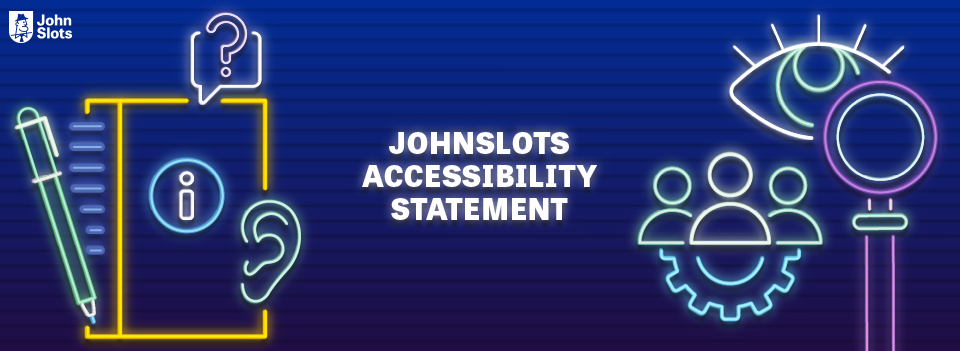
What is Web Accessibility? WCAG Explained
Web accessibility is the practice of creating websites that are accessible to everyone, regardless of circumstances. It is often associated with people with disabilities, but it also benefits:
- Older people with changing abilities
- People with a slow internet connection or limited bandwidth
- Users of alternative devices like mobile phones, smart TVs, and smartwatches
- People with ‘situational limitations’ that can limit their ability to access or interact with a website, such as bright sunlight and noisy surroundings
Web accessibility is important because everyone deserves equal opportunities and access to the web. Access to information and technology, including websites, is classified as a basic human right by the United Nations Convention on the Rights of Persons with Disabilities (UN CRPD), so web accessibility upholds these rights.
Besides making the internet more inclusive, web accessibility has a strong business case. An accessible website provides a significantly better user experience across devices and locations, which can extend your market reach, improve search engine rankings, and enhance brand reputation.
Web Accessibility Standards
Web accessibility standards are internationally recognised guidelines for creating accessible websites. The most prominent set of accessibility standards is the Web Content Accessibility Guidelines (WCAG).
Web Content Accessibility Guidelines (WCAG)
The WCAG was developed by the World Wide Web Consortium (W3C) as part of the web accessibility initiative. It provides guidelines for creating websites that are accessible to everyone, regardless of disability, device, age, location, or any other circumstances.
According to the WCAG guidelines, websites have to achieve four basic principles to be considered fully accessible (the ‘POUR’ principles):
- Perceivable: Web content must be perceivable through at least one of the users’ senses. For example, images should have alternative text for visually impaired users, and videos should have captions and transcripts for hearing-impaired or deafblind users.
- Operable: The website must be operable to everyone, regardless of ability. It should not require an interaction that a user cannot perform. For example, it should support keyboard navigation for people who can’t use a mouse and screen readers for the visually impaired.
- Understandable: The website must use clear, simple language and predictable, consistent interfaces to allow people with cognitive or reading disabilities to navigate and understand it.
- Robust: The website must work well across platforms, browsers, and devices, even for people using assistive tools.
There are two working versions of the WCAG: WCAG 2.0, published in 2008, and 2.1, published in 2018. WCAG 2.1 has all the guidelines from 2.0 plus a few additional success criteria. The success criteria are categorised into three conformance levels: A, AA, and AAA.
- Level A: Level A covers only the most basic accessibility requirements. A website that doesn’t conform to this level is completely inaccessible.
- Level AA: This level satisfies all Level A success criteria and addresses most of the common accessibility barriers for all users.
- Level AAA: Satisfies all Level AA criteria and addresses all the accessibility barriers, ensuring websites are accessible to the widest range of users.
Achieving Level AAA is desirable, but it’s generally not necessary – Level AA is considered acceptable for most websites.
Accessibility of the JohnSlots Website
We understand that to achieve our goal of guiding players toward the best possible gaming experiences, we need to provide equal access to our website. That’s why, even after implementing numerous success criteria in the WCAG, we are relentless in our pursuit of a higher level of accessibility through efforts like:
Increasing contrast: We are constantly working on increasing the contrast between elements on our web pages. For example, we’ve recently increased the contrast between the text and background elements to enhance readability, making our web content accessible for users with low vision or colour blindness.
Implementing adjustable text: We are currently implementing new fonts and adjustable text features. We’d like all our web pages to be zoomable by up to 300% on all devices and operating systems. This will allow users who need or prefer larger or smaller text sizes to read comfortably.
Adding alt attributes to images: We are adding alt text to all images to provide context to individuals who cannot physically see them. This includes people who have difficulty seeing images for one reason or another and visually impaired people who rely on screen readers.
Adding accessible Rich Internet Applications (ARIA) labels: We are improving the accessibility of non-text elements on our website using ARIA attributes. This will help users of assistive technologies like screen readers better understand their purposes. For example, we add ARIA labels to image buttons to describe their actions, allowing visually impaired users to interact with them effectively.
Providing text alternatives for emojis: We will add descriptive text to emojis to help users of screen readers and other assistive technologies understand their meaning and context.
Using descriptive link text: We are working on using descriptive link texts to provide context to people using screen readers and other assistive technologies. For example, instead of a button that says “more info,” we use “Download our 2023 annual report.”
Compliance Status
Web accessibility is a continuous process, and accounting for every user’s needs takes time. That is why at JohnSlots, we relentlessly pursue the highest WCAG 2.1 Level AAA compliance.
However, we want to ensure we hit the mark, so we need your help. We would appreciate any feedback or thoughts you have on our website’s accessibility.










